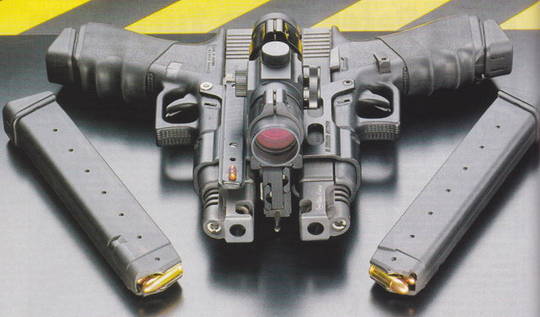When John Moses Browning perfected his 1898 design into the Model of 1911, adopted by the US Army as it’s primary sidearm (M1911), he had given the world it’s first semi-automatic, short-recoil handgun. An accomplishment which, but for the addition of a picattiny rail, is virtually unchanged from 1911. His hammer-fired pistol had a single-action trigger. This means that the trigger had one purpose: drop the hammer. When that hammer dropped, it forced the firing pin into the primer and the world heard a “bang!”
Browning’s pistol was virtually unchallenged as the firearm of choice for serious shooting for a century. But handguns appeared in the early 1980’s (like the SIG Sauer Classics) that could decock the hammer. The 1911 was either “cocked and locked,” or it was empty! These new upstarts had a round in the chamber – but the hammer was NOT cocked! If you managed to do that safely with a 1911, you would have to cock the hammer with your thumb. Why? Because the only other way to cock the hammer is to rack the slide, which tosses your chambered round on the floor!
The SIG Sauer, and others of this genre, have a different type of action. The 1911 is single-action (SA), as stated above, but these handguns are double-action, then single-action. If the hammer is decocked, the trigger will actually pull the hammer back to cock it, just like a double-action revolver, before firing. This is not possible with the 1911. The hammer is worthless if he firearm is not cocked.
Imagine the surprise as 1911 combat veterans watched that hammer pull back as the shooterS started pulling the trigger! You just can’t do that with a 1911! The trigger on the SIG Sauer is called DA/SA because the first pull of the trigger, assuming the gun has been decocked, is double-action (cocking the hammer, then dropping it.) Each subsequent shot, due to the cocking action of the slide, is single-action. This is known as DA/SA.
Now this story, so far, has been about hammer-fired handguns. What of this new breed of striker-fired firearms? In most cases, and I’ll use GLOCK as the example, of course, the striker is pre-cocked PARTIALLY by racking the slide. The trigger actually continues the cocking (first action), then releases the striker to hit the primer in the cartridge (the second action.) For this reason, this type of firearm has a double-action trigger. However, since a striker-fired handgun has no hammer, there is no way to manually alter the action. Therefore these firearms are better described as double-action only, or DAO. The way GLOCK describes it in official literature is, the GLOCK pistol “is similar to a constant double-action only system.”
Here are some good rules of thumb:
- If the trigger is ALWAYS the same, it’s either SA or DAO.
- Single-action revolvers have a loading gate.
- If the position of the trigger indicates whether the gun is cocked or not, it’s a double-action pistol.
- If the trigger position differs depending on the actions of the shooter or state of the handgun, it’s DA/SA.
